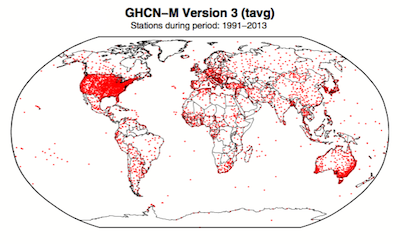 Arguments
Arguments
 Software
Software
 Resources
Comments
Resources
Comments
 The Consensus Project
The Consensus Project
 Translations
Translations
 About
Support
About
Support


Latest Posts
- Zeke's 2026 and 2027 global temperature forecasts
- 2025 SkS Weekly Climate Change & Global Warming News Roundup #51
- Skeptical Science New Research for Week #51 2025
- What are the causes of recent record-high global temperatures?
- Fact brief - Are toxic heavy metals from solar panels posing a threat to human health?
- Emergence vs Detection & Attribution
- 2025 SkS Weekly Climate Change & Global Warming News Roundup #50
- Skeptical Science New Research for Week #50 2025
- The rest of the world is lapping the U.S. in the EV race
- Fact brief - Are electromagnetic fields from solar farms harmful to human health?
- Comparing climate models with observations
- 2025 SkS Weekly Climate Change & Global Warming News Roundup #49
- Skeptical Science New Research for Week #49 2025
- Climate Adam & Dr Gilbz - Paris Climate Agreement At 10: Did It Do Anything?
- Fact brief - Does the recent slowdown in Arctic sea-ice extent loss disprove human-caused warming?
- Why the chemtrail conspiracy theory lingers and grows – and why Tucker Carlson is talking about it
- 2025 SkS Weekly Climate Change & Global Warming News Roundup #48
- Skeptical Science New Research for Week #48 2025
- Consensus machines
- Just have a Think - How an African energy revolution could save ALL of us.
- A girl’s grades drop every summer. There’s an alarming explanation.
- 2025 SkS Weekly Climate Change & Global Warming News Roundup #47
- Fact brief - Are changes in solar activity causing climate change?
- Skeptical Science New Research for Week #47 2025
- Exploring newly released estimates of current policy warming
- Climate Adam - Why the Climate Crisis is a Health Crisis
- Super pollutants are trendy, but we should be careful how we use them
- 2025 SkS Weekly Climate Change & Global Warming News Roundup #46
- Skeptical Science New Research for Week #46 2025
- On the Gates climate memo
Archived Rebuttal
This is the archived Basic rebuttal to the climate myth "Temp record is unreliable". Click here to view the latest rebuttal.
What the science says...
|
The warming trend is the same in rural and urban areas, measured by thermometers and satellites, and by natural thermometers. |
Temperature data is essential for predicting the weather. So, the U.S. National Weather Service, and every other weather service around the world, wants temperatures to be measured as accurately as possible.
To understand climate change we also need to be sure we can trust historical measurements. A group called the International Surface Temperature Initiative is dedicated to making global land temperature data available in a transparent manner.
Surface temperature measurements are collected from about 30,000 stations around the world (Rennie et al. 2014). About 7000 of these have long, consistent monthly records (Fig. 1). As technology gets better, stations are updated with newer equipment. When equipment is updated or stations are moved, the new data is compared to the old record to be sure measurements are consistent over time.

Figure 1. Station locations with at least 1 month of data in the monthly Global Historical Climatology Network (GHCN-M). This set of 7280 stations are used in the global land surface databank. (Rennie et al. 2014)
In 2009 some people worried that weather stations placed in poor locations could make the temperature record unreliable. Scientists at the National Climatic Data Center took those critics seriously and did a careful study of the possible problem. Their article "On the reliability of the U.S. surface temperature record" (Menne et al. 2010) had a surprising conclusion. The temperatures from stations that critics claimed were "poorly sited" actually showed slightly cooler maximum daily temperatures compared to the average.
In 2010 Dr. Richard Muller criticized the "hockey stick" graph and decided to do his own temperature analysis. He organized a group called Berkeley Earth to do an independent study of the temperature record. They specifically wanted to answer the question is "the temperature rise on land improperly affected by the four key biases (station quality, homogenization, urban heat island, and station selection)?" Their conclusion was NO. None of those factors bias the temperature record. The Berkeley conclusions about the urban heat effect were nicely explained by Andy Skuce in an SkS post in 2011. Figure 2 shows that the U.S. network does not show differences between rural and urban sites.

Figure 2. Comparison of spatially gridded minimum temperatures for U.S. Historical Climatology Network (USHCN) data adjusted for time-of-day (TOB) only, and selected for rural or urban neighborhoods after homogenization to remove biases. (Hausfather et al. 2013)
Temperatures measured on land are only one part of understanding the climate. We track many indicators of climate change to get the big picture. All indicators point to the same conclusion: the global temperature is increasing.
------
See also
Understanding adjustments to temperature data, Zeke Hausfather
Explainer: How data adjustments affect global temperature records, Zeke Hausfather
Time-of-observation Bias, John Hartz
Check original data
All the Berkeley Earth data and analyses are available online at http://berkeleyearth.org/data/.
Plot your own temperature trends with Kevin's calculator.
Or plot the differences with rural, urban, or selected regions with another calculator by Kevin.
NASA GISS Surface Temperature Analysis (GISSTEMP) describes how NASA handles the urban heat effect and links to current data.
NOAA Global Historical Climate Network (GHCN) Daily. GHCN-Daily contains records from over 100,000 stations in 180 countries and territories.
Updated on 2017-08-15 by Sarah.
THE ESCALATOR

(free to republish)
























































